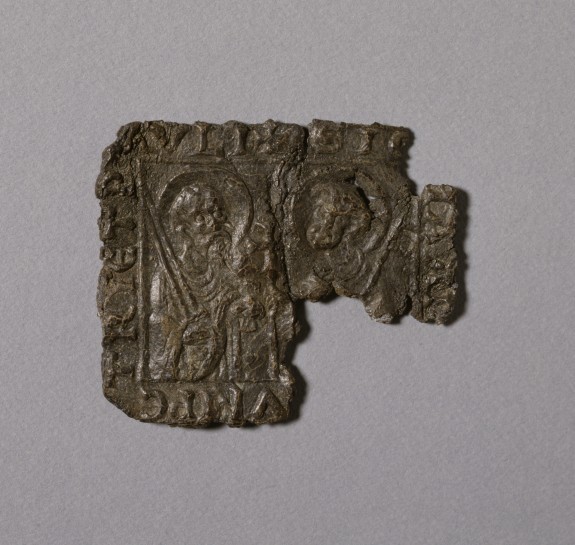Lazio : Pilgrims Badge with Saints Peter and Paul

Photo of The Pilgrims Badge with Saint's Peter and Paul 13th to 14th Century, found in Torcello, Italy, made in Rome, Italy, taken by Walters Art Museum, Piero Tozzi, New York.
Due to the severe mortality rate of priests and the increasing fear of dying before redemption was possible, people decided it was in their best interest to travel to Rome. At this time, the papacy moved to Avignon and so the population of Rome was significantly small in comparison to its previous numbers. The remaining people acted as guides for the pilgrims when they arrived, however a great many observers of the pilgrimages believed it was how the plague spread. Despite the condemnation of the pilgrimage, with people locking pilgrims out and keeping them from “spreading the disease,” several Christians still made an effort to be blessed by the holy relics in Rome. However, some would find it best to reach the local church or closest holy site. With the threat of the plague and the terrifying imagery presented by Dante in his Divine Comedy, people feared more for their soul than their lives. Therefore the idea of finding salvation was more important than staying alive and so they would travel to wherever they could find the best blessing possible. But if the pilgrim had a particularly sinful life, it would be in their best interest to travel all the way to Rome. Once they reached Rome, it was a common practice to receive or purchase a badge, like the one pictured here, that would be worn around the neck as a clasp for a cloak, or as a broach on the shirt. They would have loops attached to the badge to make its wearing easier, and had an inscription that indicated who the saints were on the badge. These pieces were small, only reaching about two inches in length and width, and produced in large quantities, so no one artist can be attributed to the design. The purpose of the badge was to protect and watch over the wearer while acting as a sign of dedication to the faith. The latter fact was especially important because people would be respected in society more often than those who did not put their faith above everything else. The badges were made out of lead and had images of Saints, especially Peter and Paul, pressed onto the face of the piece. Then they would have been blessed by the remaining priests in Rome or would be brought to the relics in order to absorb the power from them. Just as some people would purchase rosaries in modernity, pilgrims would buy this badge and count their blessings with it in hopes of future salvation.
